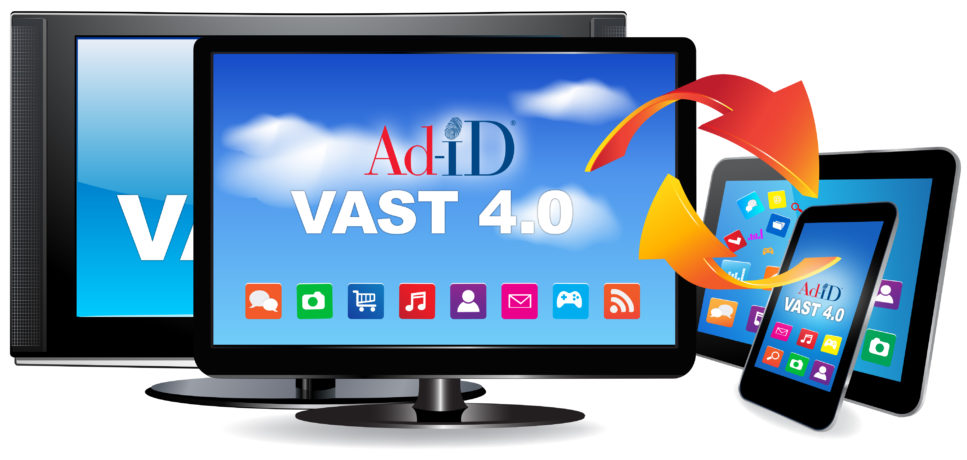Exclusives

CBS Interactive, Viacom Execs Tout Benefits of Ad-ID, VAST 4.0
Story Highlights
The proliferation of multiple video platforms and over-the-top (OTT) services have made it more important than ever for advertisers to use a standard identifier for the assets used in their ads.
That’s according to CBS Interactive and Viacom executives who touted the benefits of Ad-ID during a July 26 webinar. They also cited the various benefits of the latest version of the Interactive Advertising Bureau’s (IAB) digital Video Ad Serving Template (VAST) system, VAST 4.0.
“We live in a cross-platform world,” so the ability to measure across platforms is “pertinent” now, said Julian Zilberbrand, EVP of audience science for Viacom. Ad-ID is needed for ads and content because standardization is “pretty necessary in order for you to manage your own library of content, especially as that moves across multiple platforms,” he said.
Agreeing with him, Jarred Wilichinsky, VP of video monetization and operations at CBS Interactive, said “standardization always will lead to ease of execution and scale.”
But there are still many advertisers who are holding out because they don’t yet see the same value of using a common identifier for ads as they do when it comes to the manufacturing of their products, Harold Geller, chief growth officer at Ad-ID said during the webinar. A standard identifier system is also important now because many advertisers use multiple ad agencies, all of which use different internal systems, and different processes and procedures, he said.
Released in January. VAST 4.0 includes a requirement for a unique creative identifier such as Ad-ID in the U.S., Geller said. Ad-ID is the industry standard registration authority for ad assets across all media platforms in the U.S., and is a joint venture of the American Association of Advertising Agencies and the Association of National Advertisers.
There were over 360,000 ads registered with Ad-ID in 2015, on behalf of more than 3,300 advertisers, Geller said.
The new version of VAST was a “response to the ever-changing, ever forward-moving migration of television money and television dollars into the digital ecosystem,” Alanna Gombert, GM of the IAB Tech Lab, said during the webinar. VAST 4.0 enables users to describe a video ad, including the location and details of a media file, impression URLs, tracking and verification info, and other metadata about the ad, she explained.
The updates to VAST were “pretty substantial,” she said. One important area is cross-platform support, including ad-stitching services, which she said are “quite prevalent in our space now,” she said. Meanwhile, server-side ad insertion is also included in VAST 4.0 and it “has been a very large priority on the digital side and going into the television side” now as well, she said.
The mezzanine file in VAST 4.0 contains all of the commands and information for serving including audio and “we’re working really hard to make sure that digital also includes OTT, so when we are talking about audio transformation, encoding, even transmission to a certain extent, it’ll all be in the mezzanine file” and used correctly for each device that is used, she said.
VAST 4.0 is important to video operations, Wilichinsky said. That’s because “one of the most important things” for a publisher is “the quality of your execution and the user experience,” he said. “As a TV broadcaster, maintaining the TV experience online is expected” now, he said.
He went on to say VAST 4.0 “really opens the door officially into server-side ad insertion which, when you’re not on desktop, is probably one of the main, preferred paths of execution when you’re talking about any device” because of the user experience. He added: “With a stitched video, your transition from content to … breaks and back to content looks like TV: It’s very smooth. There’s no buffering. It’s one string to whatever device it is.” That’s important because “every day another OTT device pops up, or a new phone, or a new connected TV,” and “they are all different in their own special way,” he said.
It’s important to support content wherever viewers want to view that content, he said, adding Ad-ID has become important because there “needs to be an identifier that is very unique to a very specific piece of creative for these stitching services to operate correctly.”
VAST is important because it provides “in-depth measurement” capabilities for ads, Zilberbrand said. “If you are putting dollars in the market in the video space and you are not leveraging the VAST capabilities and the function and measurement within VAST, you’re … missing out” and it could be argued that “there’s negligence involved,” he said.
Measurement, after all, is “the basis of everything that we do from an investment standpoint,” Zilberbrand said. VAST has allowed for a “deeper ability to measure” everything from impressions to clicks to completion rates, he said. That enables a company to “qualify and quantify the value of your investment,” he said, adding: “Without measurement, you can’t properly determine what you did in the market.”
VAST 4.0’s enhancements have only made the system better, he said. “Now you’re in a position to ultimately track things from end to end and really understand where your dollars are working and ultimately determine where your investments should go,” he said.
On top of that, Ad-ID provides “deep metadata” that offers additional intelligence on your investment, as well as “the quality of the creative” and how it’s working, enabling companies like his to better manage its media, he said. Ad-ID also enables you to get better as a marketer, he said.









